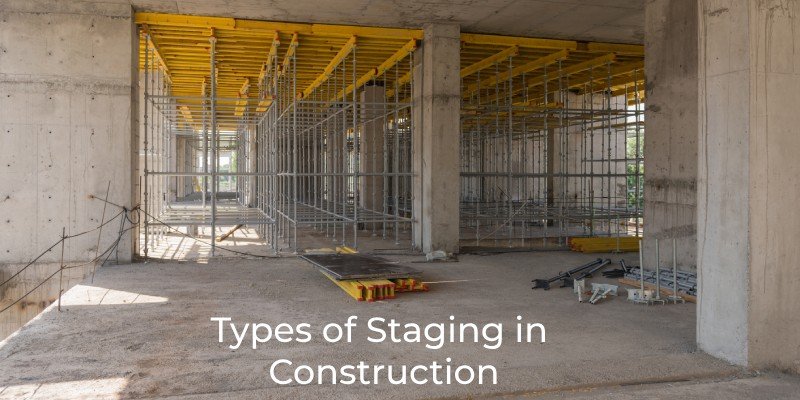Thumb Rules for Building Construction: Success Guidelines
In the vast landscape of building construction, certain thumb rules act as guiding principles for success. From the foundation to the finishing touches, each phase plays a crucial role in ensuring a project’s longevity and quality. Let’s delve into the Thumb Rules for Building Construction.
13 Powerful Thumb Rules for Building Construction
Constructing a building is an intricate procedure demanding careful planning and precise execution. Success in construction doesn’t happen by chance; it is a result of adhering to thumb rules that have been proven to stand the test of time.
Let’s explore the 13 Powerful Thumb Rules for Building Construction:
1. Foundations of Success
The foundation is more than just the literal base of a structure; it’s the metaphorical bedrock of success in construction. Before pouring concrete, a meticulous analysis of the soil and site conditions is imperative. Understanding the load-bearing capacity, drainage patterns, and potential challenges allows for the selection of an appropriate foundation type. Without this crucial step, the entire project could be at risk of instability and future issues.
2. Materials Matter
In the realm of construction, the saying “you’re only as strong as your weakest link” holds. The materials used in construction are the very fabric of a building’s strength and resilience. Opting for high-quality materials might incur initial costs, but the dividends in terms of durability and reduced maintenance expenses are substantial. From reinforced steel to advanced composite materials, the market offers a plethora of options that contribute to the structural integrity and longevity of buildings.
3. Cost-Efficient Designs
The marriage of functionality and cost-effectiveness is the essence of successful construction design. Engineers and architects are tasked with not just creating visually appealing structures but also optimizing space and functionality within budget constraints. A prime example is the rise of modular construction, where pre-fabricated components are assembled on-site, reducing both construction time and costs without compromising quality.
4. Construction Safety
The construction site is a dynamic and potentially hazardous environment. Prioritizing safety is not just a legal requirement but a moral obligation. Rigorous safety protocols, regular training sessions, and the provision of state-of-the-art personal protective equipment are paramount. By fostering a culture of safety, construction companies not only protect their workforce but also enhance overall project efficiency by minimizing accidents and associated delays.
5. Effective Project Management
Efficient project management is the glue that holds a construction project together. In an era dominated by tight timelines and complex logistics, project managers play a pivotal role in coordinating tasks, resources, and communication. Adopting methodologies such as Agile or Lean Construction ensures adaptability to changing circumstances, leading to better collaboration and timely project completion.
6. Quality Control Measures
Quality control is not a one-time affair but an ongoing process woven into the fabric of construction. Inspections, material testing, and adherence to industry standards are essential components. Through proactive quality control measures, potential defects are identified and rectified early in the construction process, preventing costly rework and ensuring the final output meets or exceeds expectations.
7. Environmental Considerations
The influence of the construction industry on the environment demands attention and consideration. Sustainable construction practices have emerged as a moral and ecological imperative. Incorporating eco-friendly materials, energy-efficient designs, and waste reduction strategies contributes not only to the health of the planet but also to the long-term viability of structures.
8. Adaptability in Design

Construction projects seldom unfold exactly as planned. Unforeseen challenges may arise, from design modifications to unexpected site conditions. The ability to adapt the design without compromising structural integrity is a hallmark of successful construction projects. Flexibility in design ensures that adjustments can be made seamlessly, allowing the project to navigate unexpected hurdles.
9. Technology Integration
The construction industry has undergone a technological renaissance, and embracing these advancements is key to success. Building Information Modeling (BIM), drones, and construction management software streamline processes, enhance accuracy, and facilitate collaboration. Construction professionals who leverage these technologies gain a competitive edge, delivering projects with greater efficiency and precision.
10. Collaboration and Communication
In the interconnected world of construction, effective communication is the linchpin of success. Architects, engineers, contractors, and clients must operate in sync. Transparent communication channels and collaborative efforts ensure that everyone involved is on the same page, reducing misunderstandings and fostering an environment conducive to successful project outcomes.
11. Regulatory Compliance
Navigating the labyrinth of building codes and regulations is non-negotiable. Compliance with local, state, and national regulations is not merely a legal obligation but a foundational aspect of construction success. Thorough knowledge of the regulatory landscape, coupled with meticulous planning, safeguards against delays and financial penalties.
12. Client Satisfaction

The ultimate litmus test of construction success lies in client satisfaction. Beyond the bricks and mortar, meeting and exceeding client expectations builds trust and goodwill. Satisfied clients become brand ambassadors, contributing to a positive reputation and ensuring a steady stream of future projects.
13. Monitoring and Evaluation
The journey of construction doesn’t end with the completion of a project. Continuous monitoring and evaluation provide valuable insights for ongoing improvement. Post-construction assessments, feedback loops, and a commitment to learning from past projects contribute to a culture of continuous improvement, ensuring each subsequent project is more successful than the last.
Conclusion
We have covered a detailed guide on the 13 Powerful Thumb Rules for Building Construction. Success in building construction is not a single factor but a combination of various elements working harmoniously. From the foundation to the finishing touches, each phase requires careful consideration. By adhering to the thumb rules discussed, construction professionals can pave the way for successful and sustainable projects.
FAQs
How important is the foundation in building construction?
The foundation is crucial, serving as the backbone of any construction project. A well-planned foundation ensures the structure’s stability and longevity.
Why is client satisfaction listed as a thumb rule?
Client satisfaction is a reflection of the project’s success. Happy clients lead to positive referrals and long-term relationships.
How can technology enhance construction processes?
Technology streamlines tasks, improves accuracy, and enhances overall efficiency in areas such as design, project management, and communication.
Is regulatory compliance only a legal requirement, or does it impact construction success?
Regulatory compliance is both a legal necessity and a fundamental aspect of construction success. Non-compliance can lead to delays and financial penalties.
What role does adaptability in design play in construction success?
Construction projects often face unexpected challenges. An adaptable design allows for flexibility, ensuring the project can navigate unforeseen circumstances.





